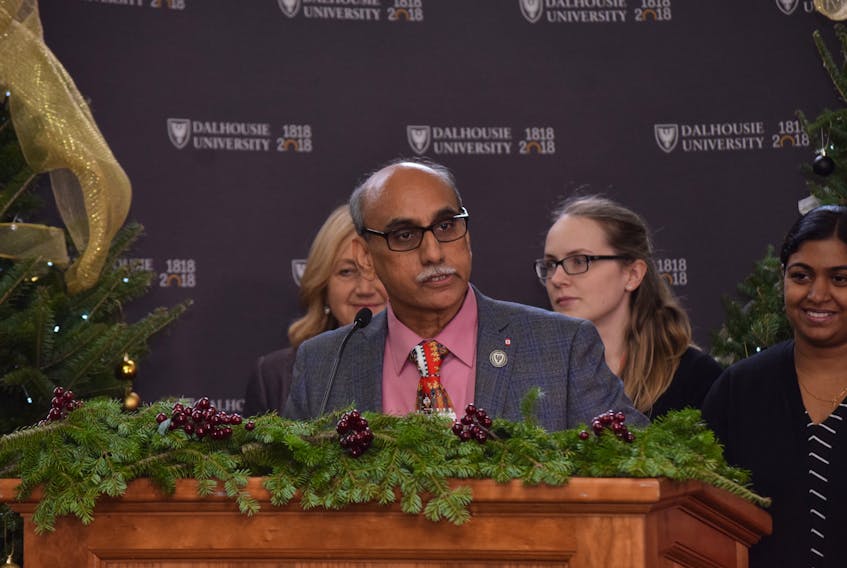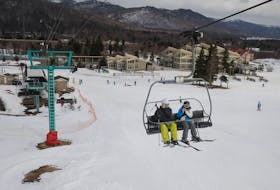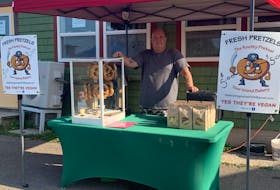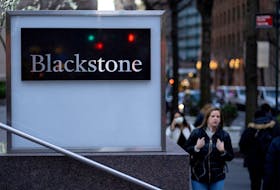BIBLE HILL. NS
You walk into your home and relax as you inhale the fragrance of a fresh Christmas tree, but then you see those annoying needles waiting to be picked up off the floor. Wouldn’t it be lovely if those needles would just stay on the tree? A team at Dal AC has been working on a way to make that happen.
Dr. Raj Lada, a plant stress and eco-physiologist in Dalhousie’s Faculty of Agriculture, established the first national Christmas Tree Research Centre (CRC) on the campus. At the centre they’ve been developing a SMART (senescence modulated abscission regulated technology) balsam fir that would retain needles for up to three months, and what they’ve done is now being offered to the Christmas tree industry.
Christmas tree growing and exporting is a $100 million industry in Atlantic Canada, but it faces competition from artificial trees, which can last for many years.
To create a SMART tree thousand thousands of balsam firs were screened for ideal traits, and genetic markers for these traits were identified. Hybridization was used to create balsam fir with the desired traits. That tree was then cloned, by growing new trees from a fragment of the parent tree.
“We hoped to have more pest resistant trees but the two traits are not related so that will take more time,” said Lada. “We can do crossing now but can’t carry both traits together. That will be phase two.”
RELATED: Dal scientists new Christmas tree should keep its needles
One of the problems now is that there is no funding for the work after Dec. 31.
“We need be thinking about what is in the next phase,” said Lada. “There could be changes with climate change so we need to keep on top of things and constantly look for opportunities.”
The research done so far is now being commercialized and Lada expects seedlings will be ready for planting next year.
“I’m a long time fan of live trees,” he said. “It’s not just about trees, but about people and lifestyle. I connect with people and their families, so it’s personal too me.
“I totally dislike artificial trees. I’ve heard their carbon footprint is nine times high than that of real trees and some contain heavy metals. I know they look attractive but there are lots of positives in a live tree.”
Researchers did discover something that might help people keep needles on their trees long this year. They studied how the genes responsible for needle drop interacted with things like temperature and were surprised to learn LED lights, especially those with red and white bulbs, help trees retain needles.
Lada said the red and white spectrums allow trees to synthesize carbohydrates and sugars, giving them energy to preserve the needles.









